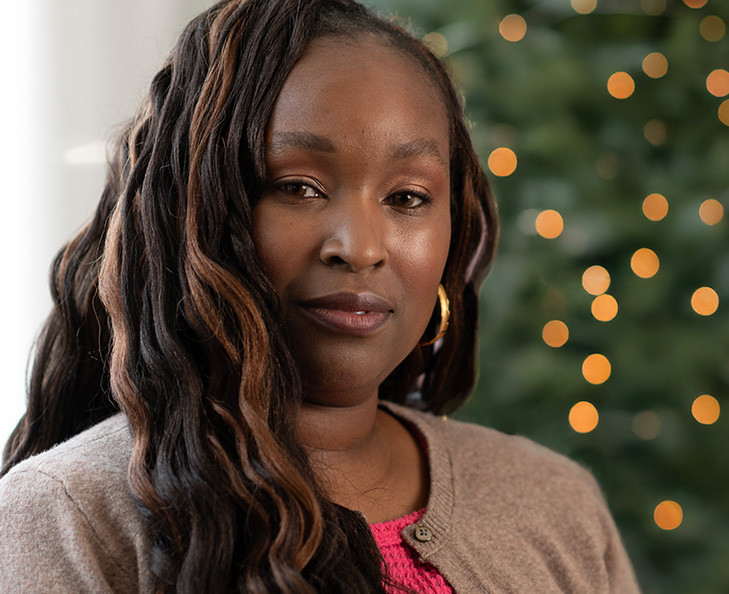Your gift is 100% tax deductible
Lung Nodules
A lung nodule is a small (≤ 3 cm) abnormal area that is sometimes found during a CT scan of the chest and/or abdomen.
If you have a lung nodule
Frequently, CT scans of the lung and/or abdomen are done that are not related to lung cancer screening or to diagnose lung cancer in patients who already have lung symptoms. These reasons include trauma, heart disease, non-cancer related lung disease, or lung infection. Lung nodules that are found on these scans are called “incidental pulmonary nodules.” In contrast, lung nodules that are found on lung cancer screening scans (i.e., LDCT) are not called incidental pulmonary nodules, and are managed differently.
Most lung nodules seen on CT scans are not cancer. They are more often the result of old infections, scar tissue, or other causes. But tests are often needed to be sure a nodule is not cancer.
Most often, the next step is to get a repeat CT scan to see if the nodule is growing over time. The time between scans might range anywhere from a few months to a year, depending on how likely your doctor thinks that the nodule could be cancer. This is based on the size, shape, and location of the nodule, as well as whether it appears to be solid or hazy. If a repeat scan shows that the nodule has grown, your doctor might also want to get another type of imaging test called a positron emission tomography (PET) scan, which can often help tell if it is cancer.
If later scans show that the nodule has grown, or if the nodule has other concerning features, your doctor will want to get a sample of it to check it for cancer cells. This is called a biopsy. This can be done in different ways:
- The doctor might pass a long, thin tube (called a bronchoscope) down your throat and into the airways of your lung to reach the nodule. A small tweezer on the end of the bronchoscope can be used to get a sample of the nodule.
- If the nodule is in the outer part of the lung, the doctor might pass a thin, hollow needle through the skin of the chest wall (with the guidance of a CT scan) and into the nodule to get a sample.
- If there is a higher chance that the nodule is cancer (or if the nodule can’t be reached with a needle or bronchoscope), surgery might be done to remove the nodule and some surrounding lung tissue. Sometimes larger parts of the lung might be removed as well.
These types of tests, biopsies, and surgeries are described in more detail in Tests for Lung Cancer.
After the biopsy
After a biopsy is done, the tissue sample will be looked at closely in the lab by a doctor called a pathologist. The pathologist will check the biopsy for cancer, infection, scar tissue, and other lung problems. If cancer is found, then special tests will be done to find out what kind of cancer it is. If something other than cancer is found, the next step will depend on the diagnosis. Some nodules will be followed with a repeat CT scan in 6-12 months for a few years to make sure it does not change. If the lung nodule biopsy shows an infection, you might be sent to a specialist called an infectious disease doctor, for further testing and treatment. Your doctor will decide on the next step, depending on the results of the biopsy.
- Written by
- References

The American Cancer Society medical and editorial content team
Our team is made up of doctors and oncology certified nurses with deep knowledge of cancer care as well as editors and translators with extensive experience in medical writing.
American College of Radiology. Lung-RADS v2022. Accessed at https://www.acr.org/-/media/ACR/Files/RADS/Lung-RADS/Lung-RADS-2022.pdf on Jan 23, 2024.
Araujo LH, Horn L, Merritt RE, Shilo K, Xu-Welliver M, Carbone DP. Ch. 69 - Cancer of the Lung: Non-small cell lung cancer and small cell lung cancer. In: Niederhuber JE, Armitage JO, Doroshow JH, Kastan MB, Tepper JE, eds. Abeloff’s Clinical Oncology. 6th ed. Philadelphia, Pa: Elsevier; 2020.
Chiang A, Detterbeck FC, Stewart T, Decker RH, Tanoue L. Chapter 48: Non-small cell lung cancer. In: DeVita VT, Lawrence TS, Rosenberg SA, eds. DeVita, Hellman, and Rosenberg’s Cancer: Principles and Practice of Oncology. 11th ed. Philadelphia, Pa: Lippincott Williams & Wilkins; 2019.
Weinberger SE and McDermott S. UpToDate. Diagnostic evaluation of the incidental pulmonary nodule. This topic last updated: Jan 16, 2024. Accessed at https://www.uptodate.com/contents/diagnostic-evaluation-of-the-incidental-pulmonary-nodule on Jan 23, 2024.
Last Revised: January 29, 2024
American Cancer Society medical information is copyrighted material. For reprint requests, please see our Content Usage Policy.
American Cancer Society Emails
Sign up to stay up-to-date with news, valuable information, and ways to get involved with the American Cancer Society.



